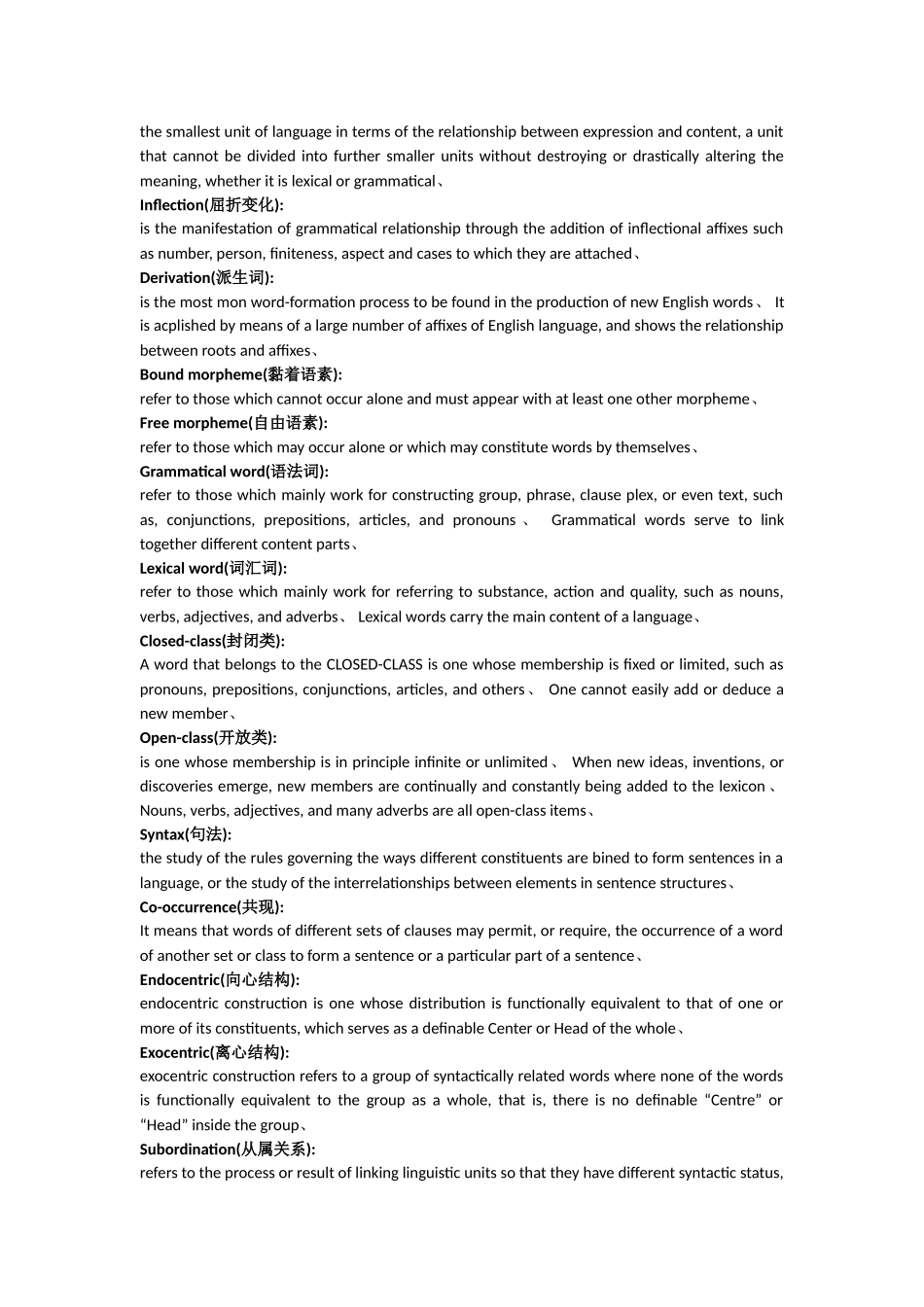Design features(定义特征):the distinctive features of human language that essentially make human language distinguishable from languages of animals、Synchronic(共时得): said of an approach that studies language at a theoretical “point” in time、 Diachronic(历时得): said of the study of development of language and languages over time、Prescriptive(规定式): to make an authoritarian statement about the correctness of a particular use of language、Descriptive(描写式): to make an objective and systematic account of the patterns and use of a language or variety、petence(语言能力): unconscious knowledge of the system of grammatical rules in a language、对于一门语言得语法规则系统得无意识获得得知识。Performance(语言运用): the language actually used by people in speaking or writing、人们说话写作时实际使用得语言。Langue(语言): the language system shared by a “speech munity”、一个“语言社团”共有得语言系统。 Parole(言语): the concrete utterances of a speaker、说话人实际说得话语。Phonology(音系学):the study of the sound patterns and sound systems of language 、 It aims to discover the principles that govern the way sounds are organized in languages, and to explain the variations that occur、International Phonetic Alphabet(国际音标): a set of standard phonetic symbols in the form of a chart (the IPA chart), designed by the International Phonetic Association since 1888、 It has been revised from time to time to include new discoveries and changes in phonetic theory and practice、Cardinal Vowels(基本元音): a set of vowel qualities arbitrarily defined, fixed and unchanging, intended to provide a frame of reference for the description of the actual vowels of existing languages、Assimilation(同化现象): a process by which one sound takes on some or all the...


